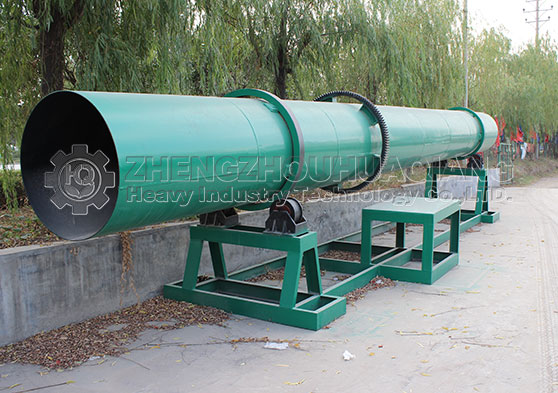
Main characteristics of urban sludge dryer
1. High thermal capacity coefficient and high thermal efficiency. By combining the crushing and stirring device with the rotary cylinder, the total heat transfer coefficient of the sludge dryer is increased to 2-3 times that of a regular rotary dryer. The crushing and stirring device crushes the material, increasing the contact area between the material and the hot air, while also preventing the short circuit of the hot air, making full use of the heat of the hot air.
2. The product particle size is uniform. Due to the addition of flocculants during the dehydration process of sludge from urban sewage plants, the viscosity of the sludge increases, making it prone to agglomeration during the drying process, which not only affects the drying effect but also increases the difficulty of utilization. In a sludge dryer, the mixing and crushing device and the kiln type movable plate inside the cylinder act to break the mud before it hardens, and the final output is uniformly sized particles (about 2mm), making the subsequent treatment or utilization process of sludge more convenient.
3. Easy to operate and operate. The sludge dryer is equipped with an automatic control system, and the biogas burner has a large and small burner combustion mode. The end of the drying drum is equipped with a temperature sensor, which controls the size conversion of the burner head through the temperature sensor, thereby controlling the humidity inside the drying drum and preventing excessive temperature from causing sludge coking. The speed of the rotary drum can be adjusted through the control cabinet.
4. Environmental protection and energy conservation. The sludge dryer uses biogas generated during sludge digestion treatment as heating energy, greatly reducing the cost of sludge drying and creating a new application field for the comprehensive utilization of biogas.
5. Unique arch breaking and vibration device. Effectively solved the problems of material bonding with the body and lifting device, as well as material agglomeration and movement obstruction during the drying process.